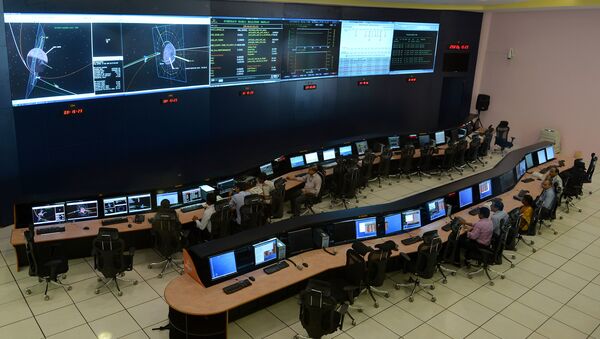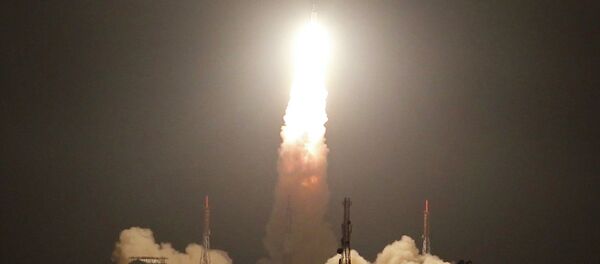New Delhi (Sputnik): The Indian Space Research Organization (ISRO) has successfully conducted a Trimethylaluminum (TMA) test along with other scientific payload using the locally-made sounding rocket RH300 MK-II to study the upper atmosphere.
The experiment with the RH300 Mk-II, which launched on April 06, 2018 was a resounding success, featuring the first Trimethylaluminium trail created in the upper atmosphere; it was photographed from the ground; ISRO claims.
READ MORE: India to Experiment With Igloo-like Structures on the Moon — Minister
"A quick look at the data shows the presence of plasma enhancements associated with Equatorial Electrojet in the Electron and Neutral Wind (ENWi) and Langmuir Probe (LP) data. Such an observation involving the TMA is first of its kind in India and warrants special attention. A detailed analysis is in progress. It is expected that the final results will help in addressing some of the unanswered questions pertaining to the wind structure in the lower ionosphere region over the geomagnetic equator," ISRO said in a statement.
The Indian scientists have been mainly exploring the dynamo region where the variability in the prevailing neutral wind and its vertical structure control in large-scale processes like Equatorial Electrojet (EEJ). The EEJ pose a threat to power grids in countries where shielding electricity infrastructure from space shocks has not been a recognized priority. Electrical disruptions caused by EEJ crashed power grids in the past, most notably in Quebec in 1989 and in Sweden in 2003, according to the study.
READ MORE: India Struggling to Establish Lost Link With Crucial Communication Satellite
The dynamo region- at an altitude of 90-120 km- is less explored because geomagnetic equator passes over the ocean at most of the places/longitudes, except over the Indian, African and Brazilian sectors. None of the conventional techniques works in this region due to many reasons.
ISRO scientists are using the indigenously developed scientific payload Electron and Neutral Wind (ENWi) Probe, which is capable of providing neutral wind assessment at any time of the day while TMA technique — suitable for twilight and night conditions- to cross-validate the ENWi data. Langmuir Probe (LP) is being used to measure electron density at dynamo heights. With the help of these scientific payloads, ISRO will assess the role of wind shears in the generation of the E-region irregularities like Sporadic E, Blanketing Es etc.



